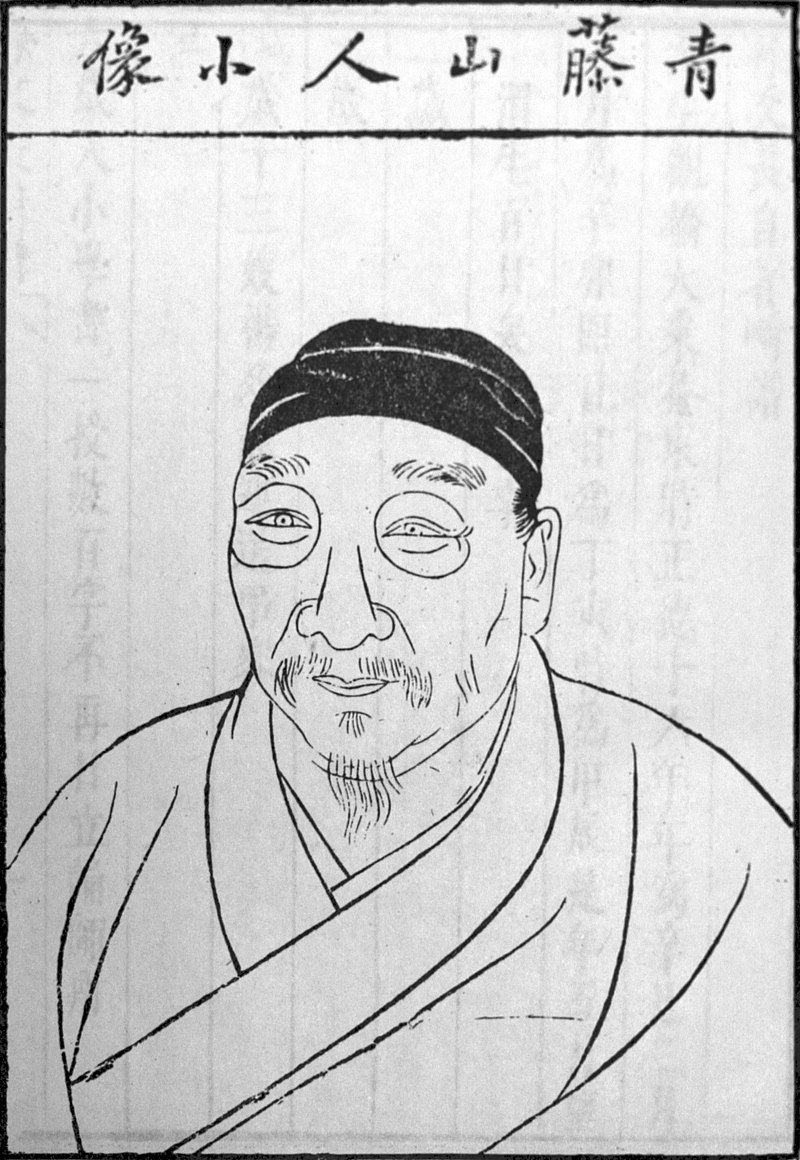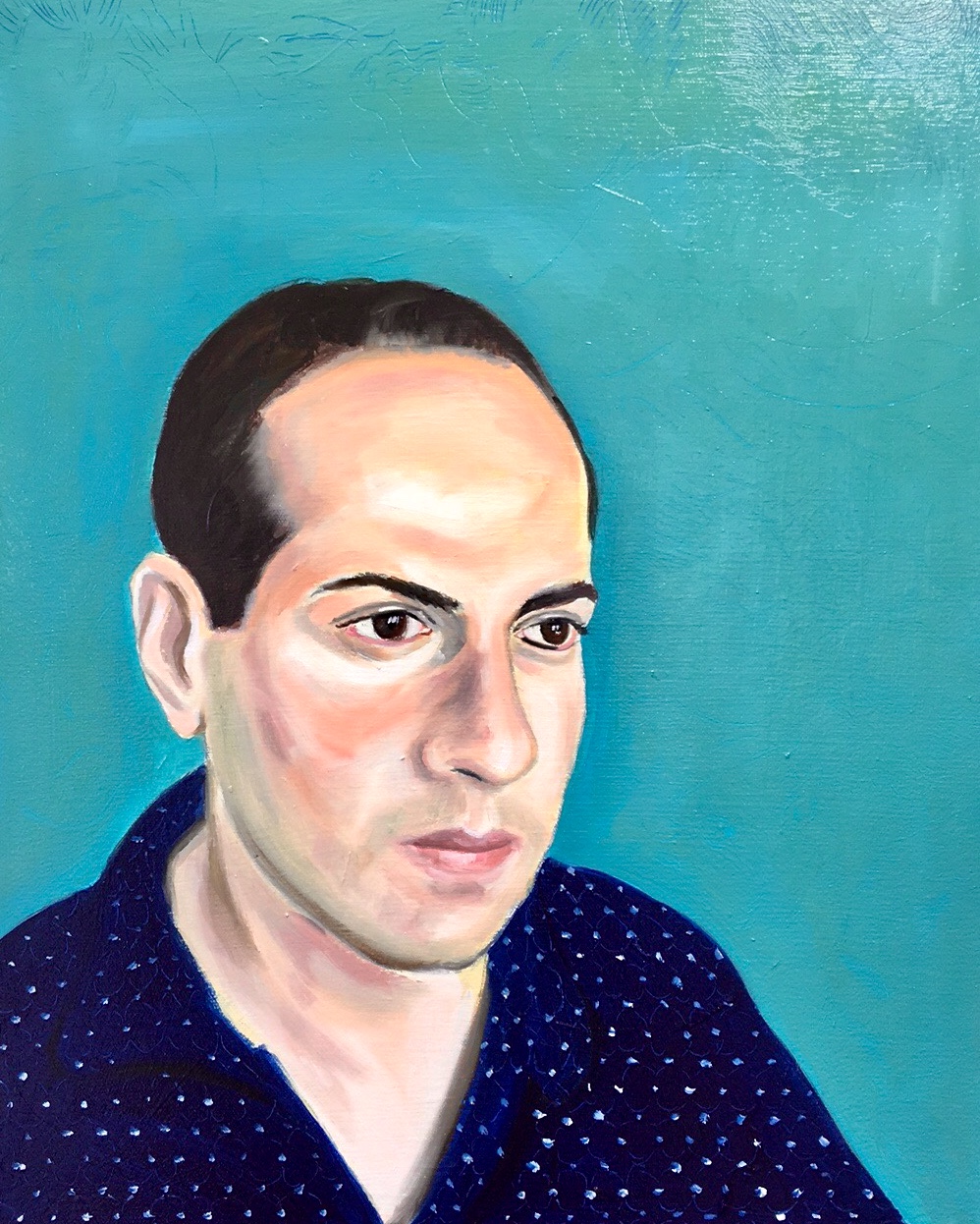Playing with Ink: 'Pomo' and 'Tarashikomi' Techniques
- Edward Luper
- Mar 15, 2022
- 4 min read
In my studies of the Rinpa school in Japan and their techniques for my own paintings, I suddenly realised something that I didn't think of before. Could the Rinpa school techniques of tarashikomi (literally meaning 'dripped in') be influenced by Chinese literati painting methods of pomo (literally 'splashed ink')? More specifically, could Tawaraya Sotatsu's (c 1570-1640) methods of wet on wet be inspired partly by Xu Wei's (1521-1593) wet on wet techniques on heavily sized paper? As both a Xu Wei scholar and student of Rinpa techniques, the thought is tantalising to say the least...

Although the hard evidence for Xu Wei's works being seen in Japan in this period (16th/17th century) is scanty, it is nevertheless still interesting from an artistic perspective to compare the works of Xu Wei and Sotatsu and later Rinpa school artists. At the very least, one can place Sotatsu and Rinpa school techniques within larger traditions of literati painting that go back to China since the 13th century with monk painters such as Muqi (1210?-1269?). To use the analogy of the family, if the pomo and tarashikomi techniques are not exactly brothers, they are at least cousins that share a common aesthetic ancestor and developed in parallel.
I) Xu Wei and Pomo

Xu Wei (1521-1593) is one of the most colourful yet overlooked figures in Chinese art history. His work is famous for his expressive ink abstractions of flowers and plants, but doesn't fit neatly into any group, such as the so called Wu School or Zhe School of the Ming dynasty. Instead he is usually just categorised as an 'eccentric' painter: a kind of lone wolf in the Chinese art world.
Indeed, Xu's life story seems to encapsulate our ideas of the 'eccentric' or 'mad' artist. After countless failures to pass the exams to become an official he became a ghost writer for a powerful Governor-general fighting pirates on the South-east coast. Yet following a fall from grace due to venal court politics, Xu Wei appears to have become mentally unstable and made numerous suicide attempts (something like nine attempts), but not before murdering his third wife and going to prison.

Xu was highly talented however, as a playwright, calligrapher and poet too. Although Xu ranked his painting fourth among his talents. His painting is perhaps today what he is most famous for. His paintings are highly expressive. Together with Xu's story of madness, they seem to capture a wild spirit. This technique of splashed ink is called pomo (泼墨).

But looks can be deceiving. Xu's highly abbreviated style is very much calculated and well-thought out. The paper is heavily sized with glue-solution to make it less absorbent and easier to control the ink. Dark ink is dripped in on lighter wet ink to create velvety gradations. True madness wouldn't be able to achieve such control of the ink and brush.
Xu was not the only one using this technique around this time, but he took it to new heights and is the most famous for it. Tang Yin (1470-1524) also used the splashed ink technique, as did Chen Daofu (1483-1544). Chinese literati painters, particularly those who were not accepted into the mainstream of power through the civil service examinations, used this technique to create a feeling of the untrammelled spirit. It was a studied attempt to reflect their free-spiritedness and aloofness from a high society they felt rejected by. Usually, such styles of painting were accompanied with typical pseudonyms such as 'hermit' or 'mountain man' to reflect their distance from the mainstream, but this in turn became such a popular trend that the term became meaningless, and we would be mistaken for thinking that Xu was in any way a real hermit. It would be akin perhaps to historians of fashion looking at what we wear today, and saying our denim represent some sort of class rebellion against elite culture of suits; when in fact certain jean brands have become the height of fashion, worn by almost everyone high and low.

Xu Wei and other artists around his time were in turn in debt to Chan (J: Zen) Buddhist ink painting, such as the one below attributed usually to Shi Ke (active 10th century) , now in Tokyo. Chan or Zen paintings sought to convey the spirit of a subject with the bare minimum of strokes, stripped of unnecessary and delusory colour. These Chan paintings made their way to Japan (the Ashikaga Shoguns 1336–1573 were especially fond of collecting Chinese art) where their influence was particularly profound.

Muqi (1210?–1269?) and his painting Six Persimmons, also in Japan, is another example of a Chinese Chan Buddhist painting that exerted a huge influence on later Japanese Zen paintings.

It features six persimmons floating on an undefined, but skilfully mottled background. The painting became famous for the tremendous skill of the brushstrokes. Their subtlety of modelling is often remarked upon. The thick and thin brushstrokes that model the lightest of the persimmons make it seem to float in contrast to the dark one next to it. The treatment of the stems and leaves recall calligraphy used for writing Chinese characters, and exhibit control of the brush at its highest level.
By the 17th century, Tawaraya Sotatsu in Kyoto drew on both courtly styles and Zen painting to create decorative underpaintings on paper for calligraphy. Sotatsu is credited with first using the tarashikomi wet on wet technique. One can perhaps see a distant relation to Xu Wei's lotus with the pomo technique.

Although by the 1640s the Ming empire was collapsing, causing many loyalists including artists, monks and merchants to flee to Japan bringing with them works of art; it would be hard to determine if Xu Wei's works (or even copies of his work) were among those brought over. Manpuku-ji temple in Kyoto, in particular, became a centre of Chinese art and culture in Japan, with many such as Ike Taiga (1723-1776) studying Chinese styles of painting and calligraphy from the Chinese monks there that had founded the new Obaku Zen sect in around 1661. But this would have been too late for Sotatsu.

It is safer to say that tarashikomi and pomo both share a common ancestry in literati painting, developing in parallel with each other. But it is fascinating to see the similarities and differences, and the importance of heavily sized paper in creating such techniques.






Comments